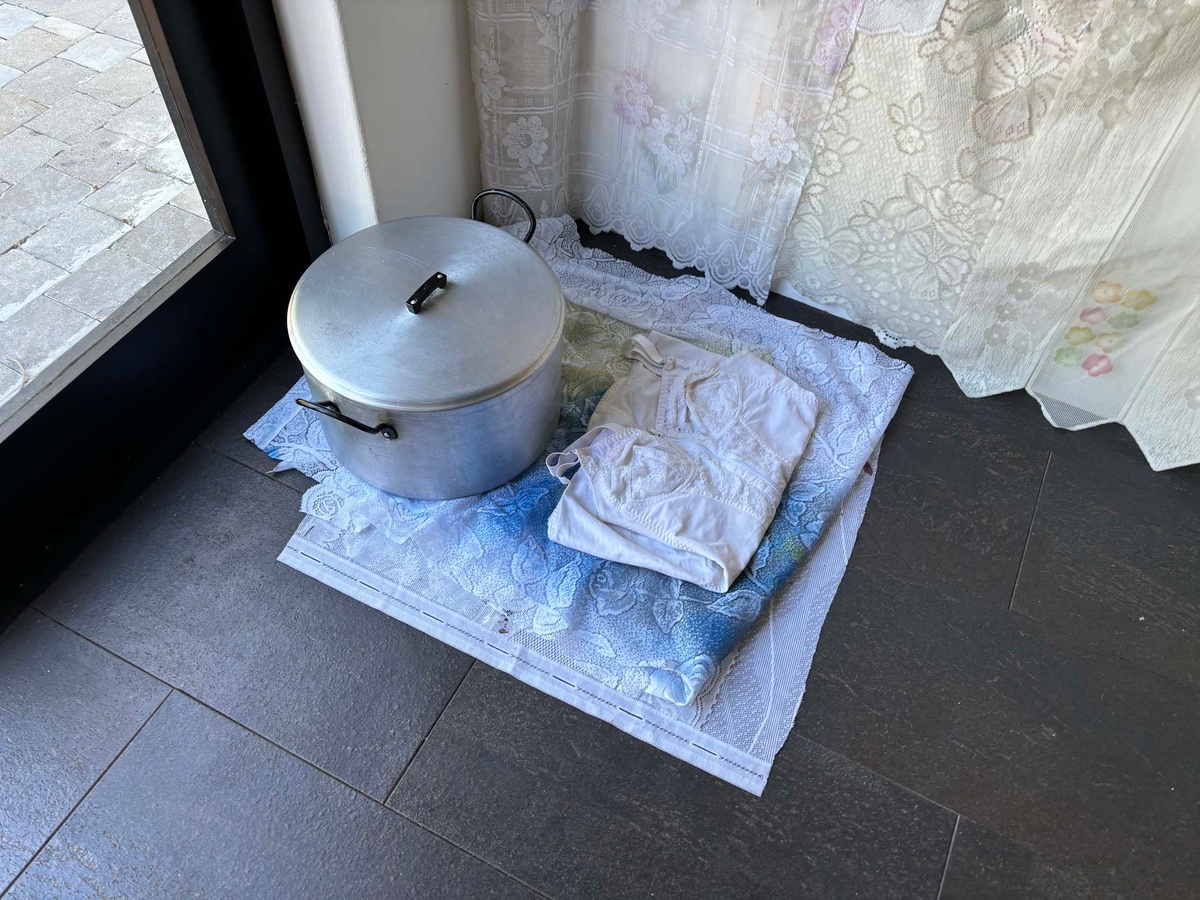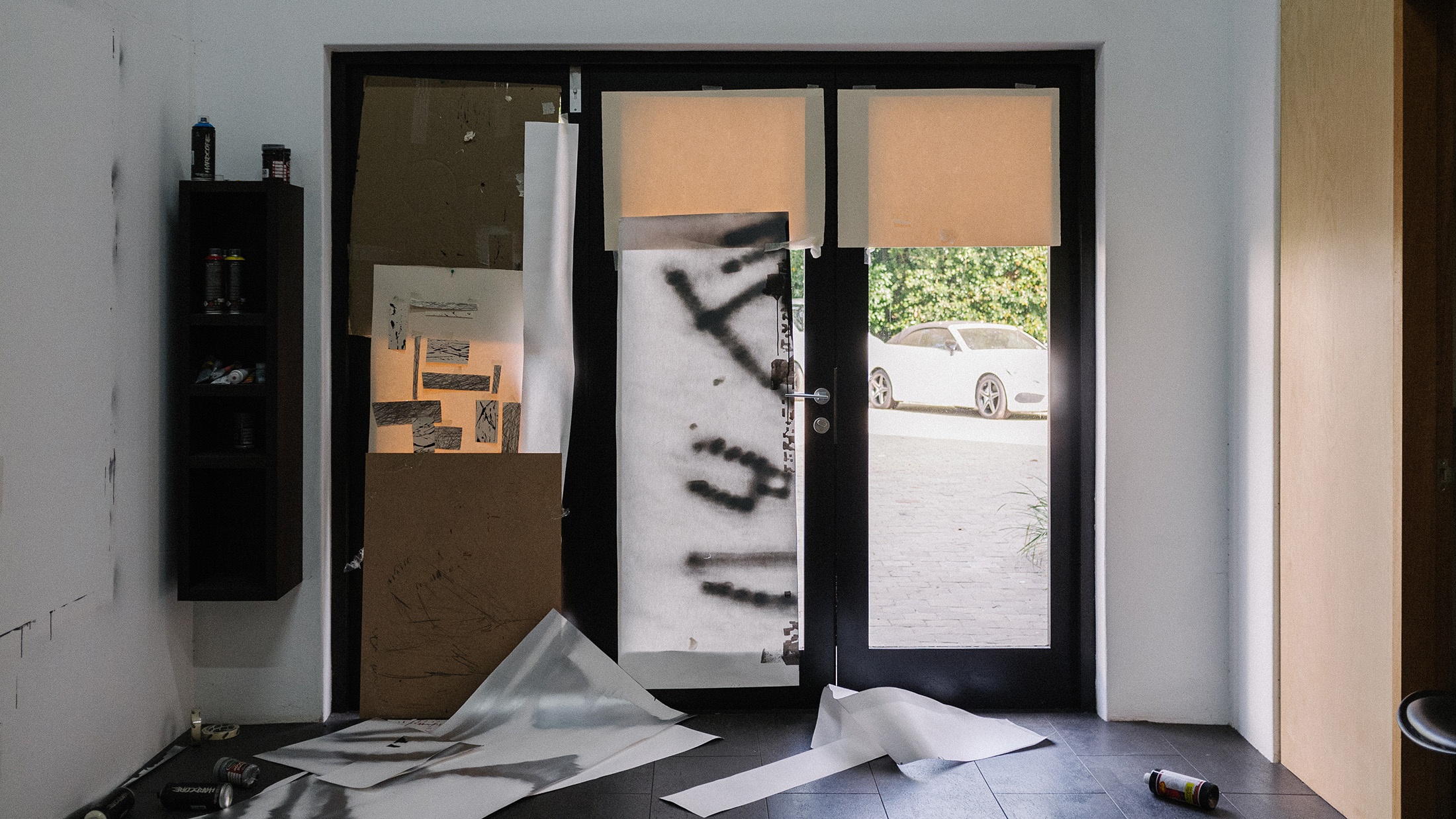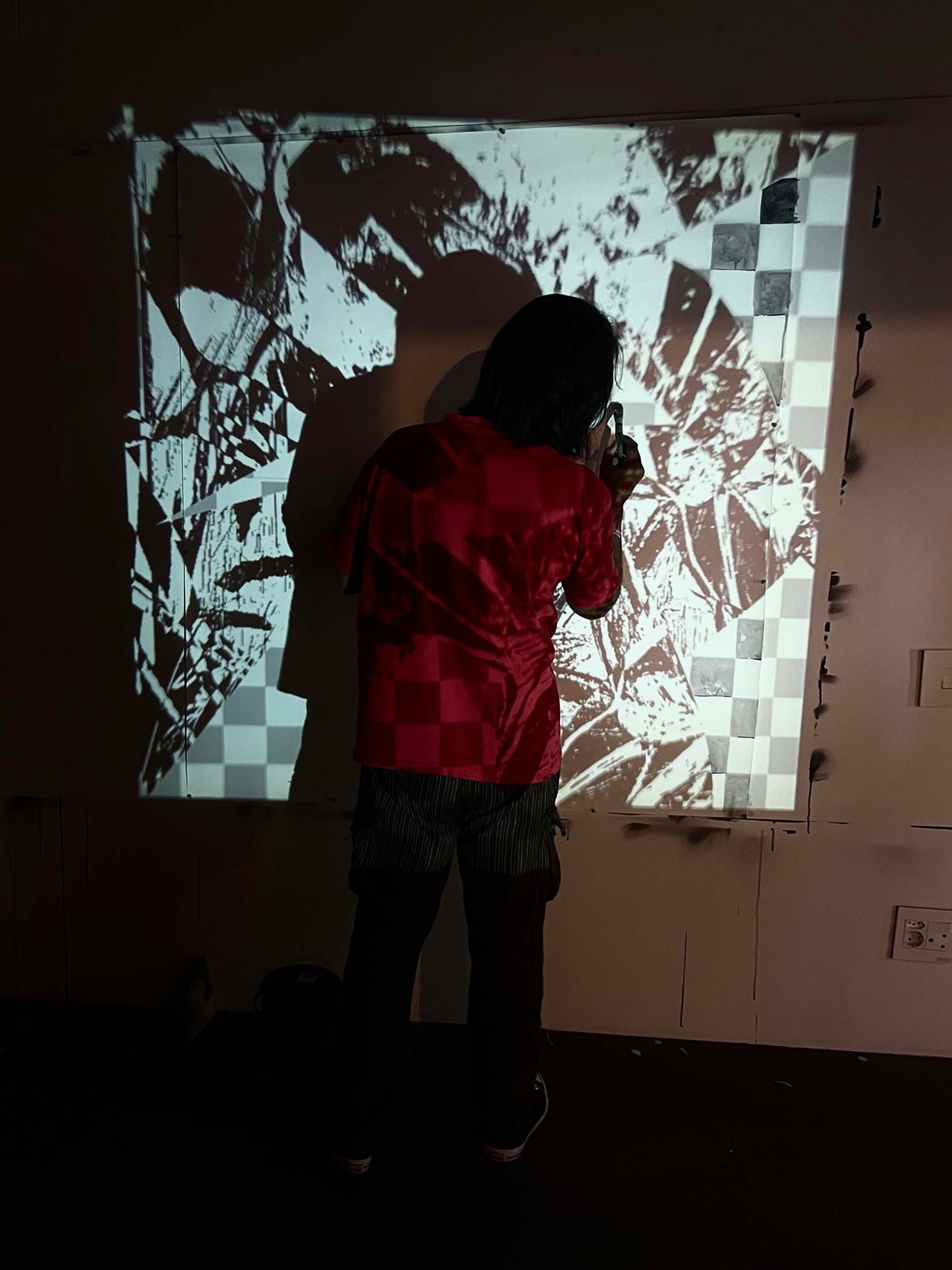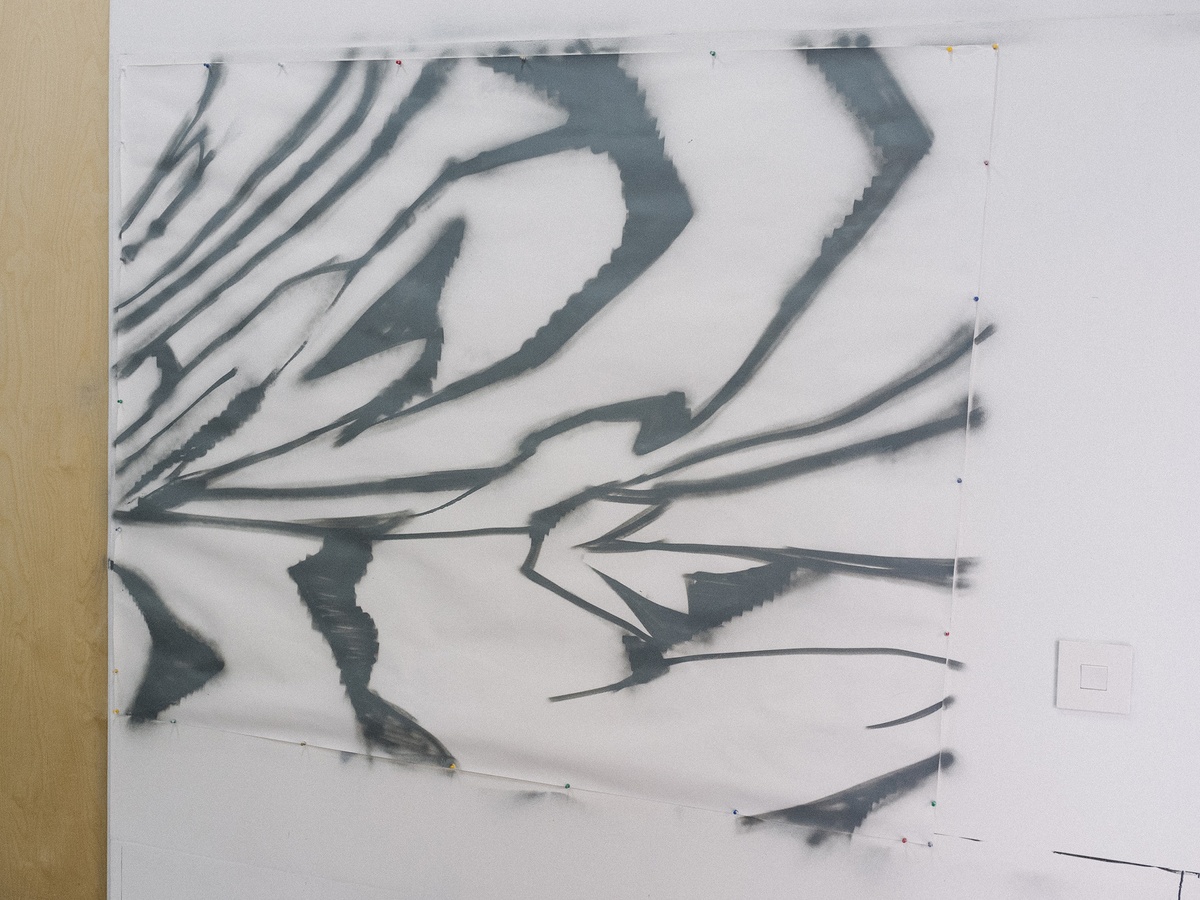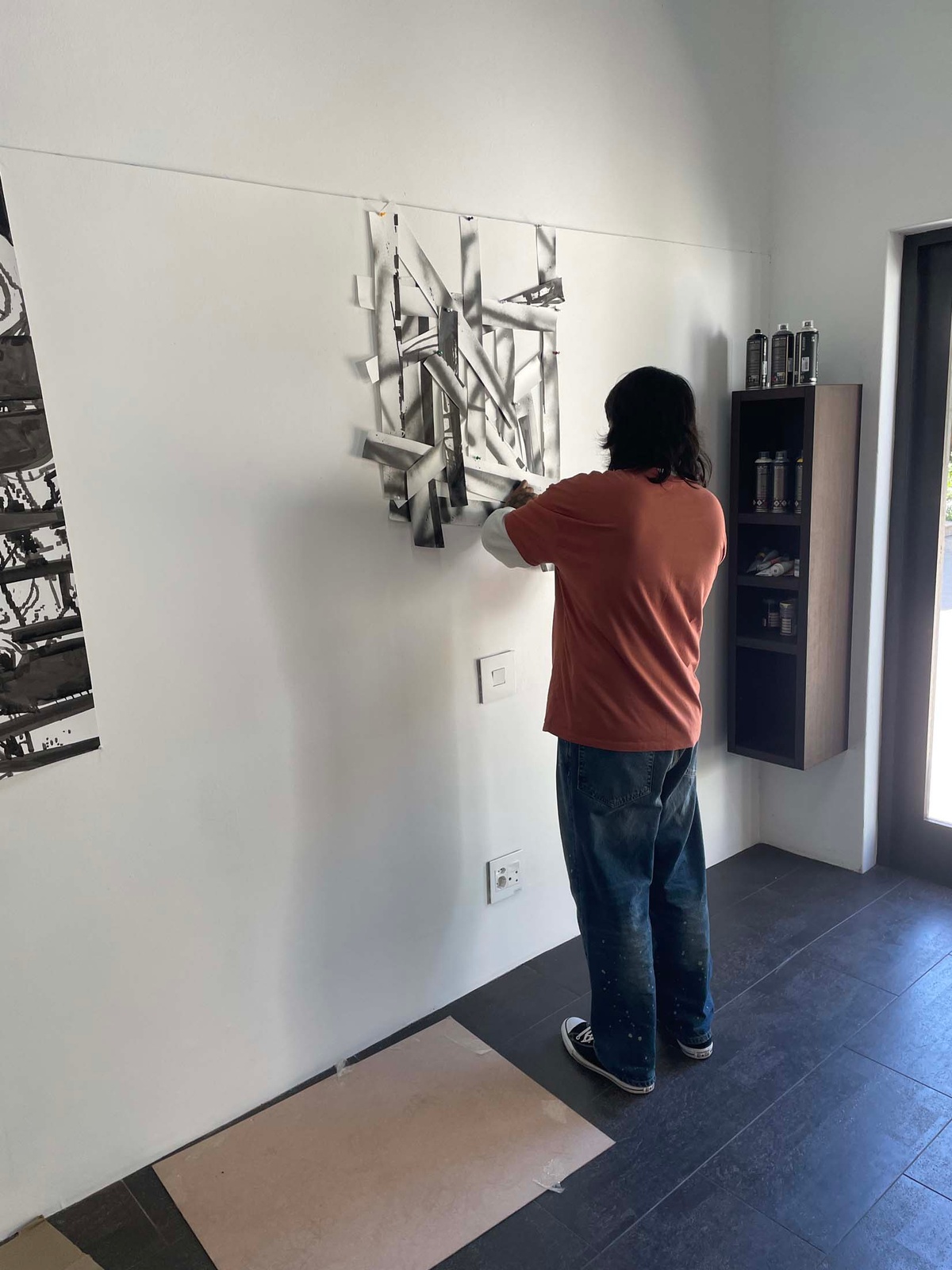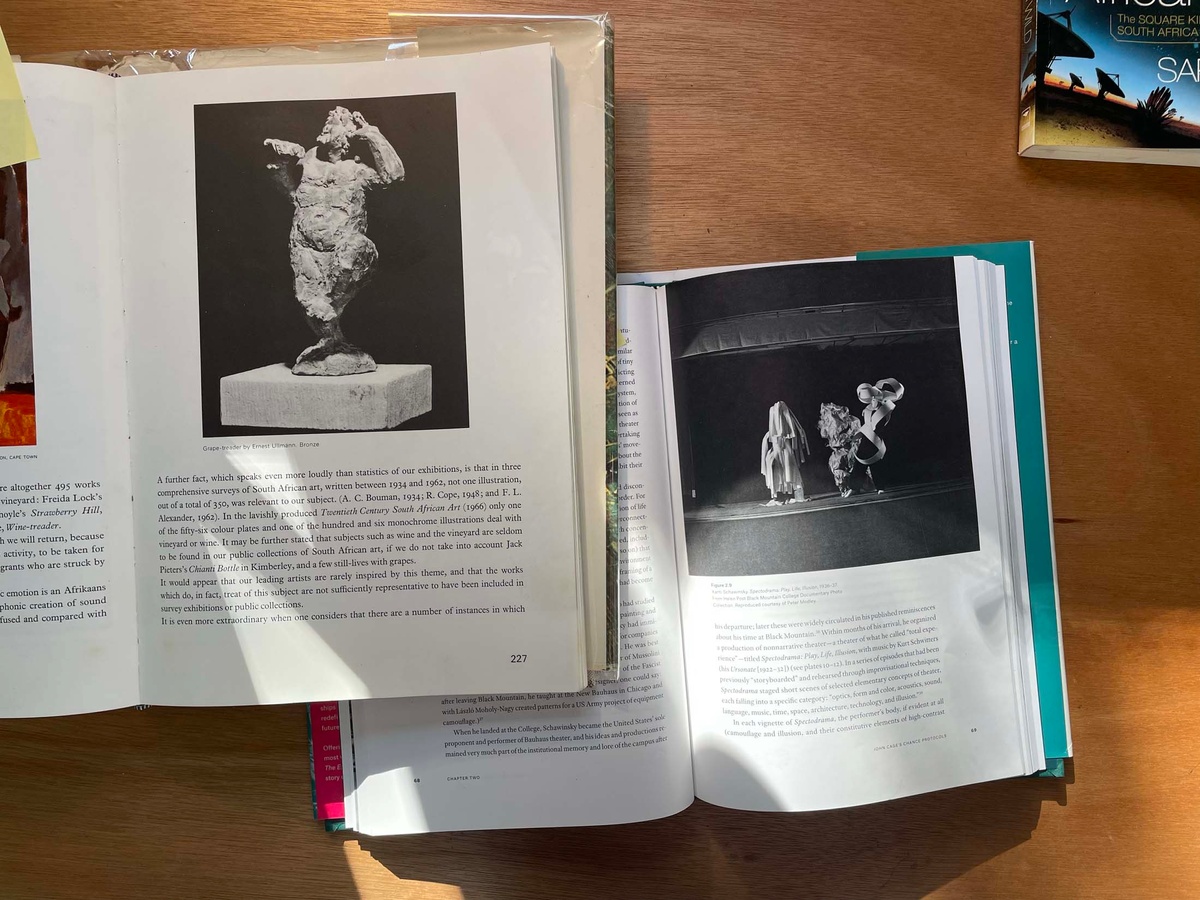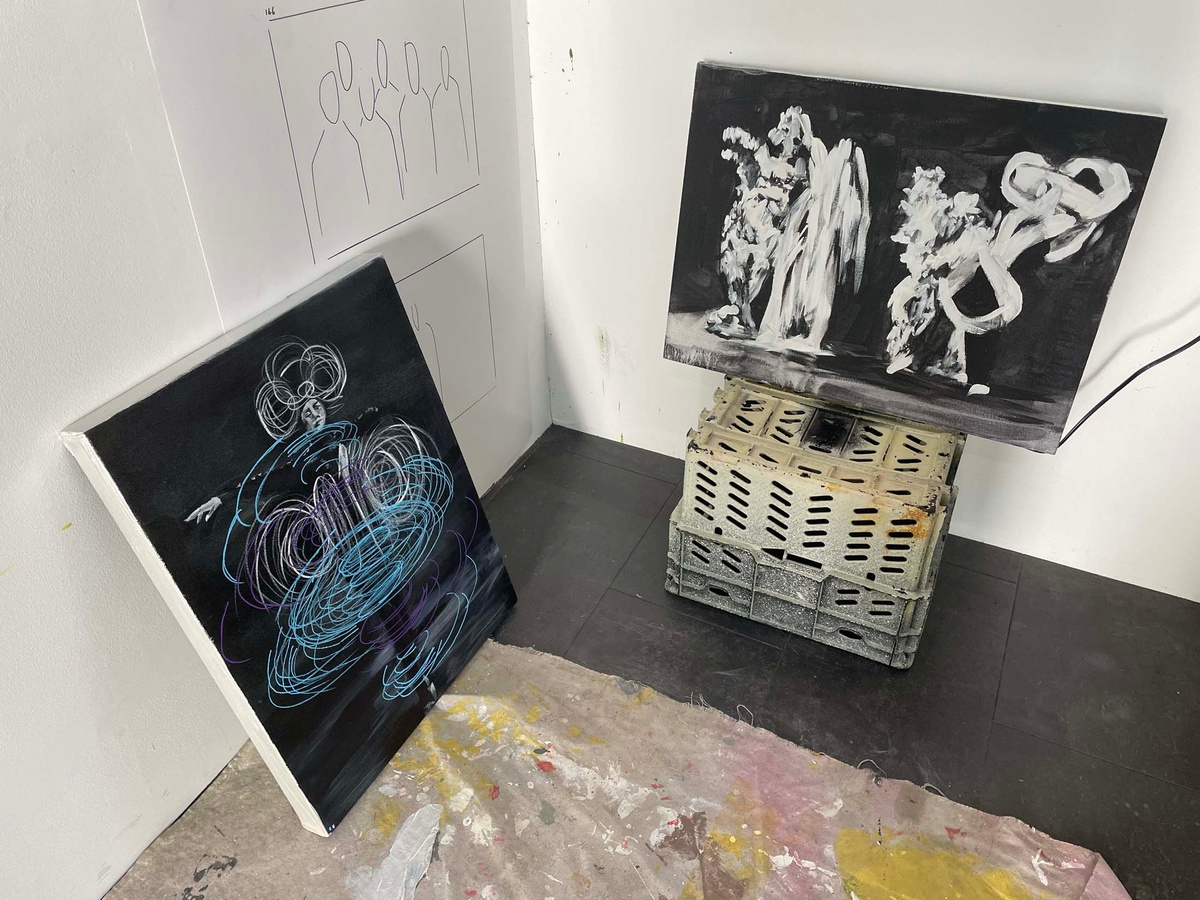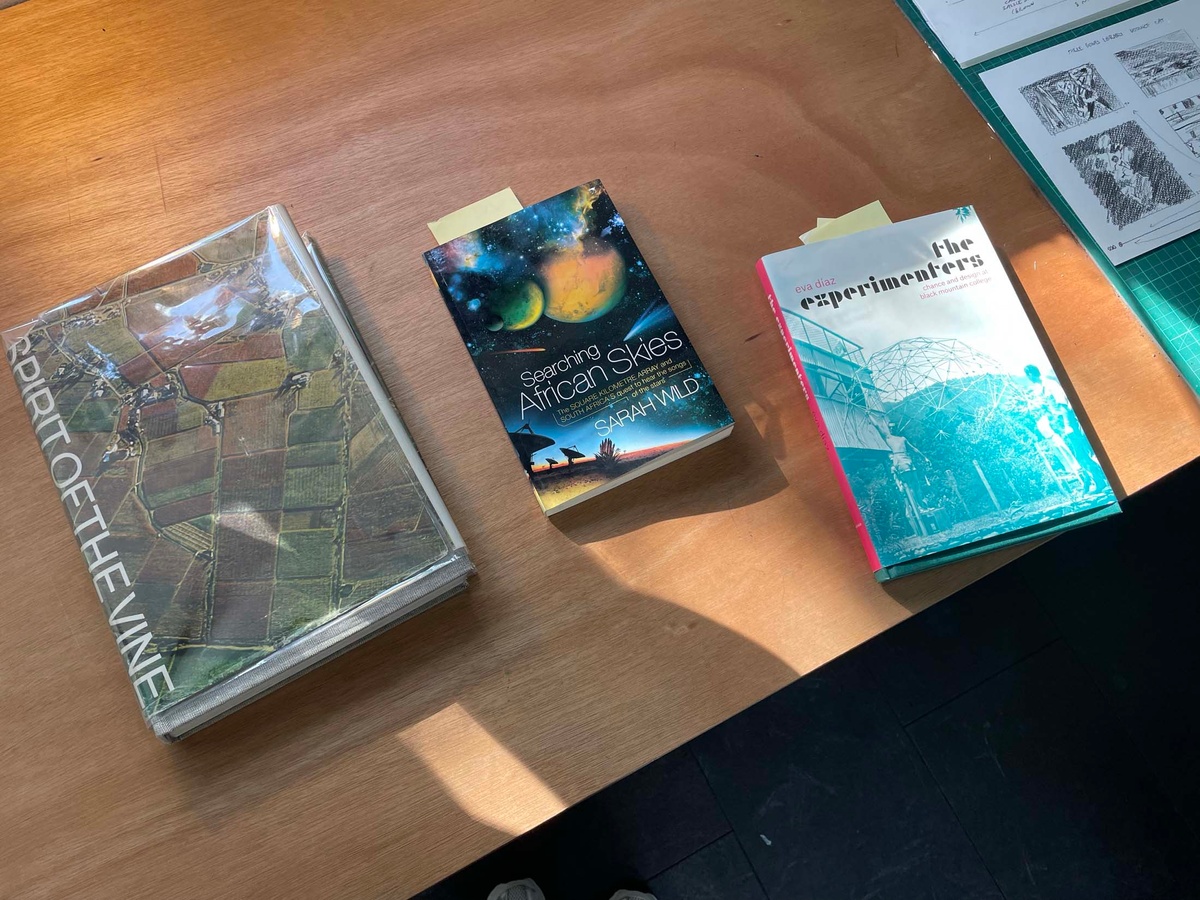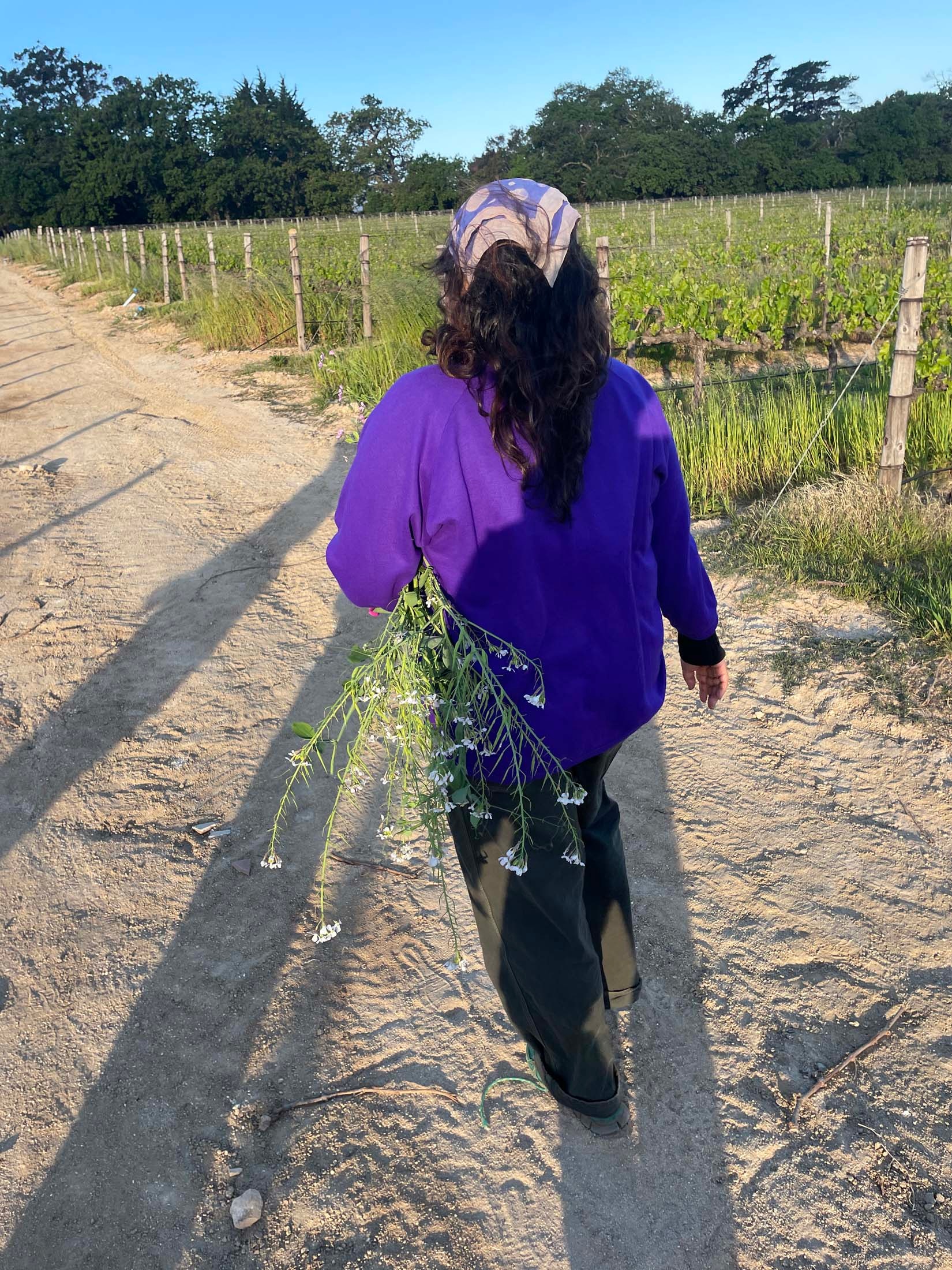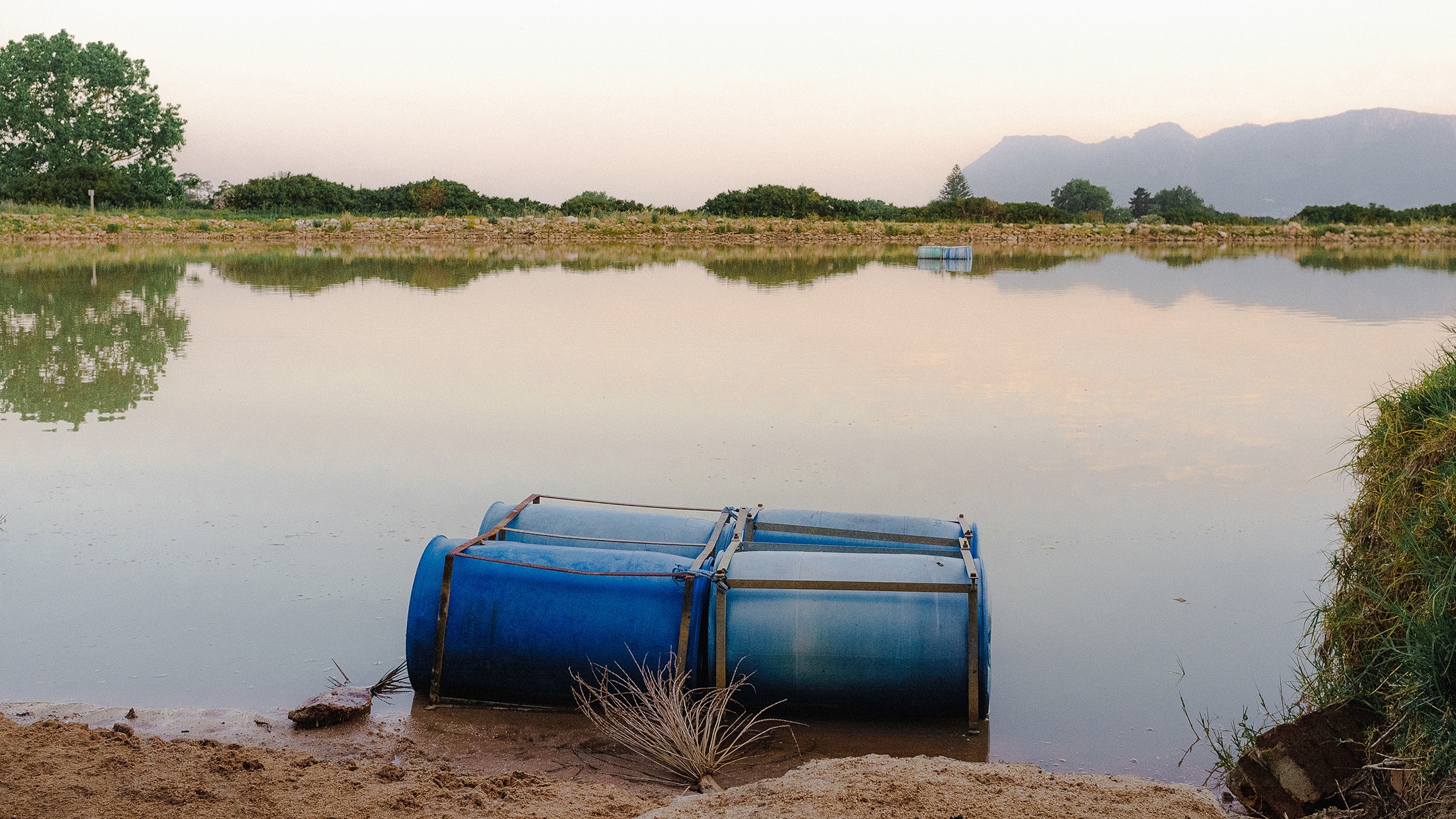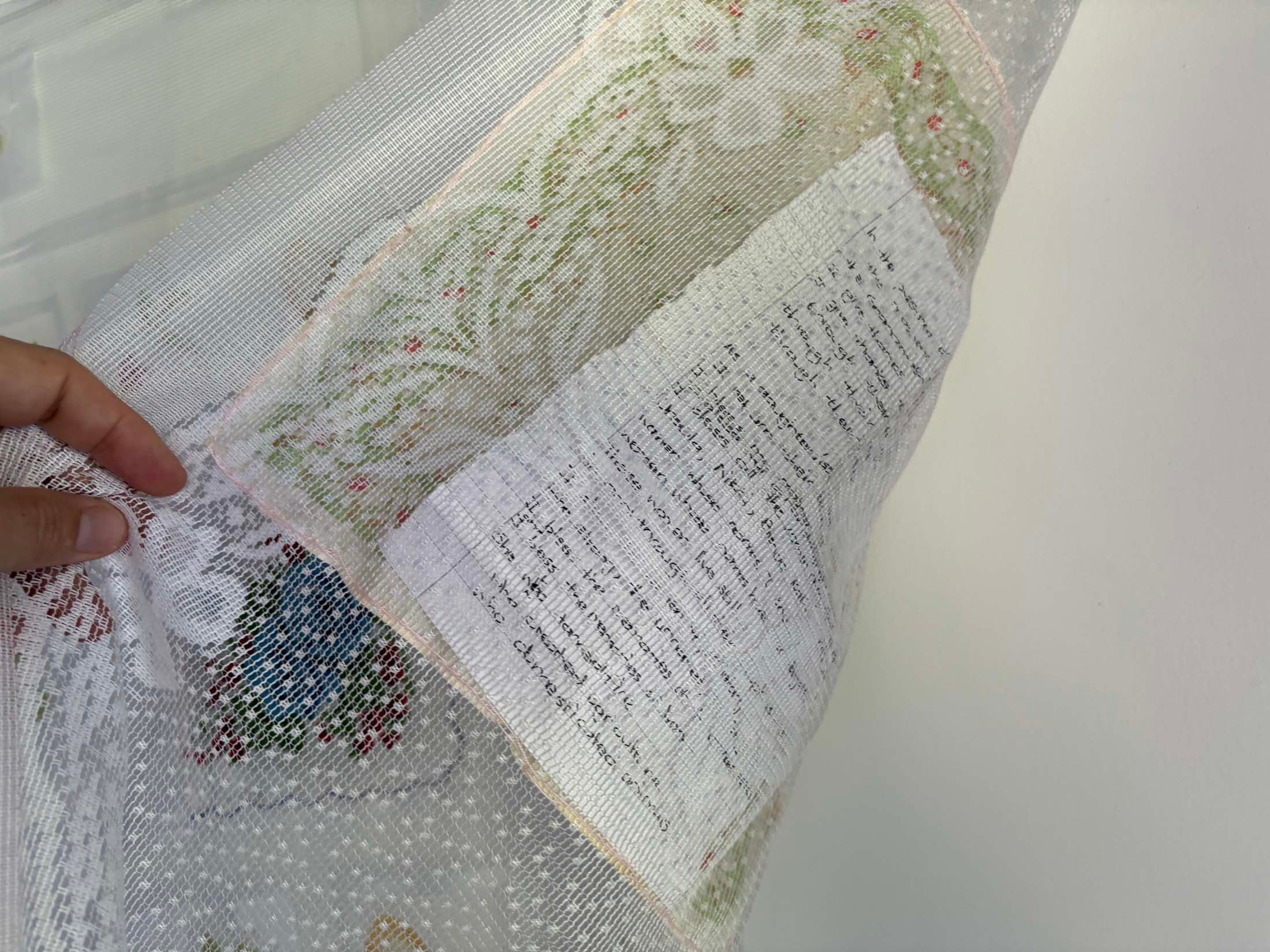
Founder: Tarik Yildirim
Participants in Retreat 2:
Jody Brand
Callan Grecia
Daniel Malan
Set alongside the vineyards of Groot Constantia, Three Bones is a research retreat founded by multi-disciplinary philosopher Tarik Yildirim. Three Bones invites practitioners from the arts and sciences to engage in creative and scholarly pursuits. Participants are accommodated in a sprawling residence that offers opportunities for communal activities, access to a multitude of hikes and meanders (with Three Bones bordering protected heritage environments and the Cape’s fynbos mountain reserve) and a private studio for each practitioner.
Jody Brand extends her reflections on cultural inheritance and history beyond her first medium, photography. Grounded in the sensory experiences of her own childhood, Brand translates haptic memories – her own together with those inherited from her maternal matriarchs – into atchaar-stained textiles, sewing keepsakes into sealed pockets, and stitching a prayer written in her grandmother’s hand onto these floating compositions. Of these works, she says:
I have been talking about them as flags, but not necessarily thinking about them as flags. In my family, we have a history of land dispossession. What does a flag mean in a context of dispossession? What is a flag for a place that doesn’t exist? If I take these outside, could the flags be portals or windows to energies from the past, becoming these in a different element?
Where forced removals legislated entire communities as landless, Brand calls on her childhood memories of camping with her family in Kleinmond, of entire summers spent out in the land, as an act of culture building that evidences being of a place, embodying its knowledge and traditions. And yet, the artist is keenly aware of the threats of continued dispossession that face coloured peoples to the present day. In the small fishing village of Kleinmond where those childhood summers were spent, the fishing community is increasingly threatened by quotas and exports. Foodstuffs like perlemoen (abalone) are delicacies for an export market, disrupting the sustained relationship communities have held with the oceans from which they subsist. “How do you talk about something difficult?” Lemeeze Davids asked, suggesting that Brand’s work offers a sensory encounter as a possible answer, where pickled and aromatic foodstuffs as dye on homemade fabrics touch environmental, political and personal concerns.
Revisiting previous experiments with formal composition and a monochromatic palette, Callan Grecia’s abstractions find their source in “too much time spent on the internet.” Found digital images are ‘crushed’ by the artist. Rendered indecipherable from their origin, they act as ‘found ideas’; the artist working with the plethora of already available online material as a generator to thinking. In an age of information overload, digital fatigue, and AI bewilderment, the artist’s familiarity and comfort working with data (where he wonders after, for example, capture codes as a tool for empathy) may offer a panacea. Do these compositions, reminiscent of Futurist experiments, afford an alternative insight into the profound ambivalence surrounding current expectations of and emotional investments in networked media?
Daniel Malan’s time at the retreat is spent exploring the aesthetics and associations of library making, creating a game for the communal reading and sharing of books. He is uniquely positioned at Three Bones, having been tasked with selecting the two fellow artists who join him there (Jody Brand and Callan Grecia) in his role as curator of books and the store at A4. Malan also curated the Three Bones’ Library for Tarik Yildirim, and he chose to begin with these books as his material while in the studio, arranging books by colour and exploring more esoteric systems of categorisation by way of thought experiments and serendipity, such as shuffling cards. He soon realised he needed to come up with rules to this approach. Conversations with his fellow residents about their particular concerns with land, memory and dispossession (Jody Brand) and time spent with found data as idea generator toward abstraction (Callan Grecia) sparked thinking about “books that are closest to here, and books that are furthest away.” A book about the history of Groot Constantia, the retreat’s next-door neighbour, proved closest; a book about space mapping the farthest distance. Between those two coordinates, Malan placed a book that seemed to carry visual resonances of both. “What is the role of a librarian?” he asked. “It could be similar to the role performed by a page number in a book. A librarian directs people to things, to the page.” Idiosyncratically sourcing image and text proved a way of orientating his artistic practice in the studio, coordinating his role as book collector with his identity as an artist. Leveraging the artwork’s capacity to make information present to the senses, while slyly alluding to absences, he restages the act of mimicry as instructional.


